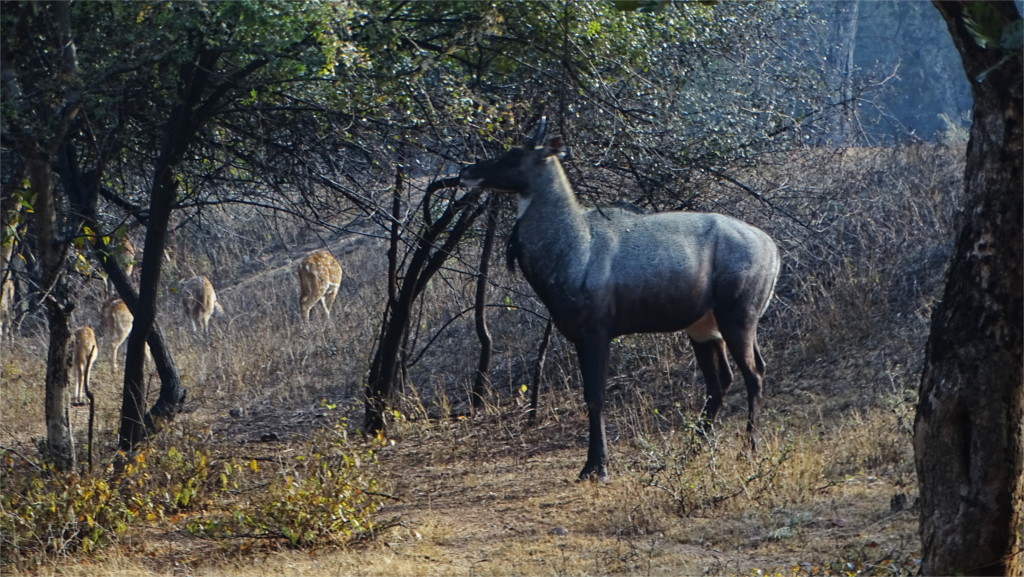Nilgai (meaning blue cow) and wild boars are original residents of India. I’ve seen paintings of both these animals in the Bhimbetka rock shelters, so they have been part of the landscape around the earliest humans in India. For all that, they are not very dense on the ground. So one tends to stop and admire them when one comes across an individual.
In Ranthambore I saw a single large male almost as soon as we entered the park. The stately, slaty blue antelope was foraging at the periphery of a herd of Cheetal. The scene was quietly beautiful: the yellow-brown coats of the Cheetal were lit up in the morning sun, whereas the darker Nilgai stood in the shadows of the trees.
As I watched the Nilgai craned its neck up to browse on the low branches of the tree near it. I saw it eating the woody twigs along with leaves and recalled news stories of man-animal conflict because Nilgai ate up crops. Nilgai population outside of these protected areas is very sparse. So talk of Nilgai destroying crops over large areas sounds like a lame excuse to hunt a protected animal.
In recent years the decline in Nilgai populations has reversed, but recent decisions to allow their killing could easily endanger them again. I was happy standing with a group of people gawking at this animal out of our history in such a peaceful setting.


Such a cool pic. Didn’t even know this exists 😀
LikeLike
Thanks.
LikeLike